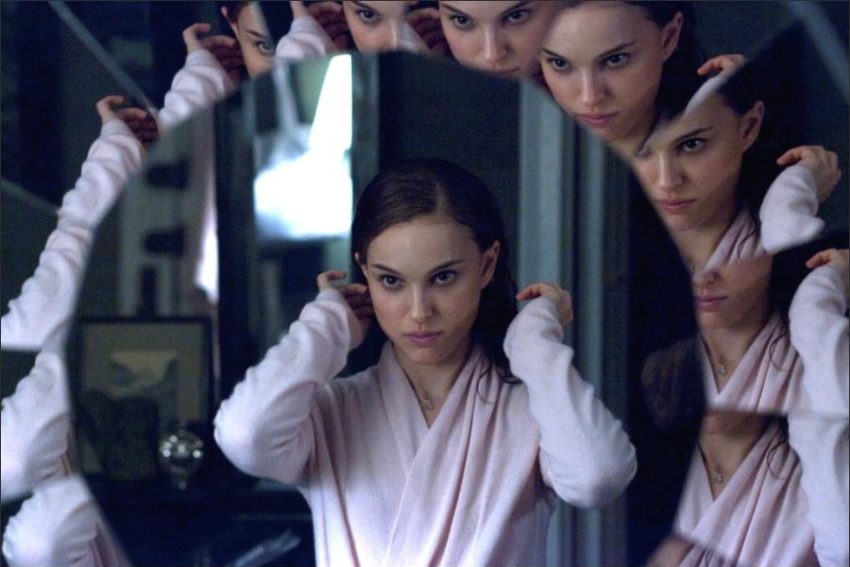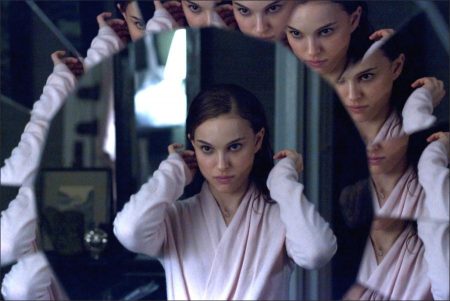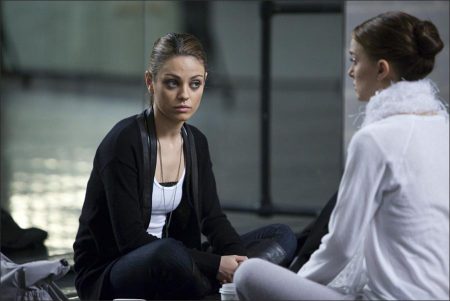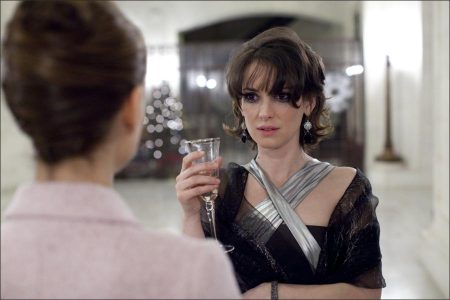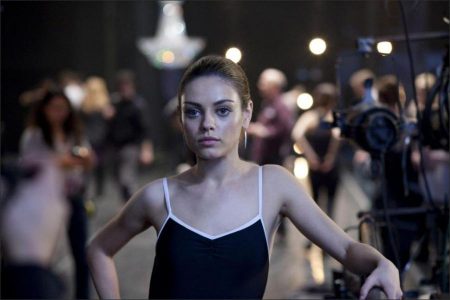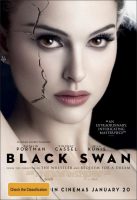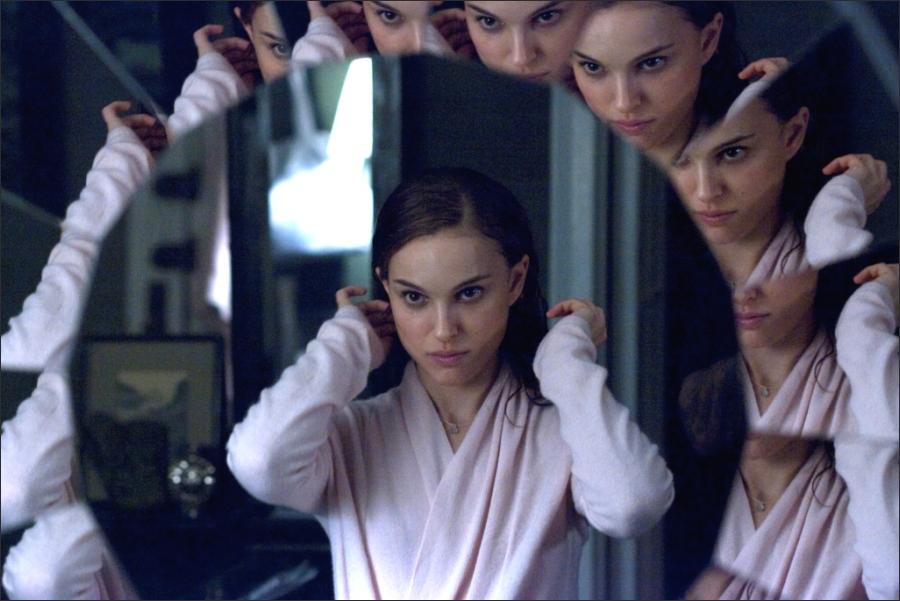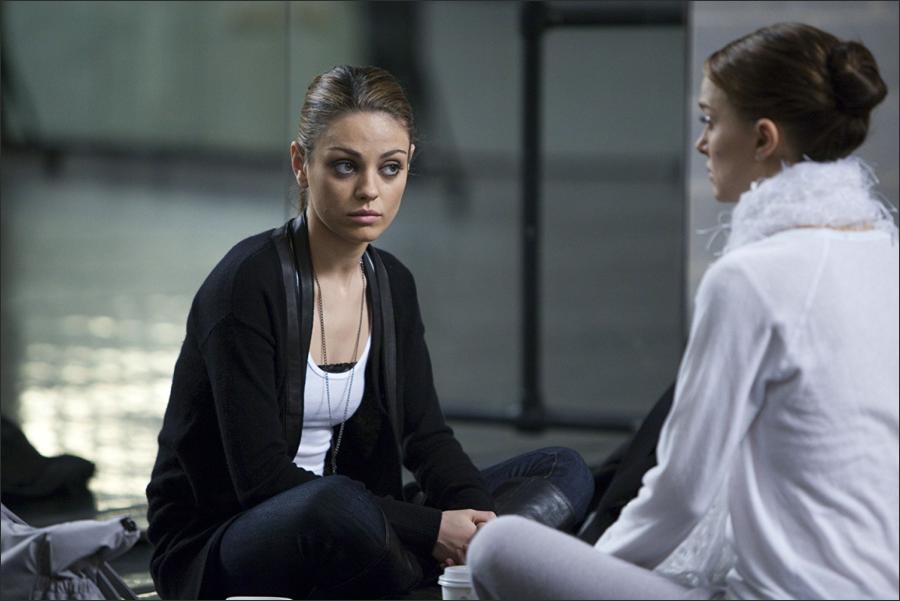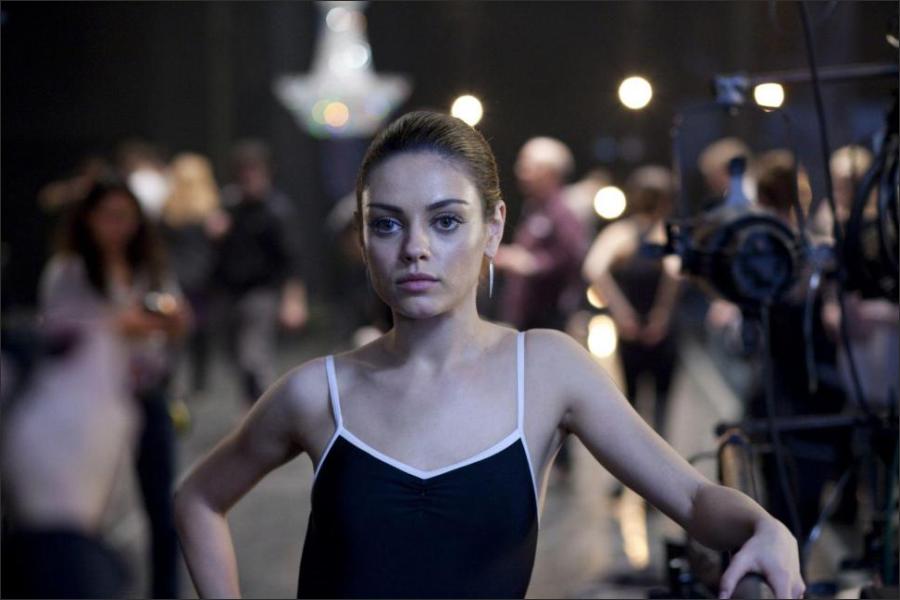Film Review for Black Swan
A witchy brew of madness and cunning, “Black Swan” tells the story of a ballerina who aches, with battered feet and an increasingly crowded head, to break out of the corps. Played by Natalie Portman in a smashing, bruising, wholly committed performance, the young dancer, Nina, looks more like a child than a woman, her flesh as undernourished as her mind. When she goes to bed at night, a nearby jewelry box tinkling “Swan Lake,” a crowd of stuffed animals watches over her, longtime companions that — as Nina and this dementedly entertaining film grow more unhinged — begin to look more like jailers than friends.
Crammed with twins — lookalikes, mirrored images, doppelgängers — the story follows that of the “Swan Lake” ballet in broad, gradually warped strokes. It opens with the artistic director of a fictional New York ballet company, Thomas (Vincent Cassel), announcing that the new season will begin with a “visceral and real” version of that old favorite. To that end he dumps his prima ballerina, Beth (Winona Ryder), and picks Nina to dance the dual role of the swan queen (an enchanted woman in bird form) and her villainous black twin. But as the pressure builds, things fall apart, or Nina does. She stumbles out of a spin and begins scratching at her skin. One day she strips a piece from her finger as lightly as if she were peeling a banana.
Part tortured-artist drama, “Black Swan” looks like a tony art-house entertainment. (Hey, there’s Lincoln Center!) But what gives it a jolt is its giddy, sometimes sleazy exploitation-cinema savvy. The director Darren Aronofsky is a well-schooled cinéaste, and in “Black Swan” he riffs on Michael Powell and Emeric Pressburger’s ballet masterpiece, “The Red Shoes,” and the pair’s “Black Narcissus,” among other influences. But it’s also likely that Mr. Aronofsky, who was born in 1969 and grew up in Brooklyn, frequented Times Square when it was known as the deuce and lined with movie palaces playing the best and worst in trash cinema. I bet he also caught a few episodes of the “Red Shoe Diaries” on cable.
That isn’t a knock. One of the pleasures of “Black Swan” is its lack of reverence toward the rarefied world of ballet, which to outsiders can look as lively as a crypt. Mr. Aronofsky makes this world (or his version of it) exciting partly by pulling back the velvet curtains and showing you the sacrifices and crushingly hard work that goes into creating beautiful dances. Nina doesn’t just pirouette prettily, she also cracks her damaged toes (the sound design picking up every crackle and crunch) and sticks her fingers down her throat to vomit up her food. Mostly, though, she trains hard, hammering her toe shoes into floor much as Jake La Motta pounded his fists into flesh. She’s a contender, but also a martyr to her art.
Mr. Aronofsky is happy to see her bleed. A filmmaker who likes to play around with genre while mixing the highbrow with the lowdown and dirty, he has built a small, vivid catalog by exploring human extremes with wildly uneven degrees of visual wow, sensitivity and intelligence. He trawled the lower depths in “Requiem for a Dream” and struggled to scale the metaphysical heights with “The Fountain,” a fable about eternal (as in, when will it end?) love. For his previous movie, “The Wrestler,” he proved his commercial smarts by taking Mickey Rourke out of deep freeze and dusting off a comeback story that was old when Wallace Beery wiped Jackie Cooper’s runny nose with the script for “The Champ.”
“Black Swan,” by contrast, surprises despite its lusty or rather sluttish predilection for clichés, which include the requisitely demanding impresario (Mr. Cassel makes a model cock of the walk) and Nina’s ballerina rival, Lily (Mila Kunis, as a succulent, borderline rancid peach). But, oh, what Mr. Aronofsky does with those clichés, which he embraces, exploits and, by a squeak, finally transcends.
Such is his faith in his ability to surmount the obvious (and the lethally blunt) that he turns Nina’s mother, Erica (a terrific Barbara Hershey), into a smother-mother who out-crazies Faye Dunaway’s Joan Crawford in the mommy dearest department. You don’t know whether to laugh or shriek (both are reasonable responses), and it is this uncertainty and at times delicious unease that proves to be Mr. Aronofsky’s sweet spot.
It’s easy to read “Black Swan” as a gloss on the artistic pursuit of the ideal. But take another look, and you see that Mr. Aronofsky is simultaneously telling that story straight, playing with the suffering-artist stereotype and having his nasty way with Nina, burdening her with trippy psychodrama and letting her run wild in a sexcapade that will soon be in heavy rotation on the Web. The screenplay, by Mark Heyman, Andrés Heinz and John McLaughlin, invites pop-psychological interpretations about women who self-mutilate while striving for their perfect selves, a description that seems to fit Nina. But such a reading only flattens a film that from scene to scene is deadly serious, downright goofy and by turns shocking, funny and touching.
With “Black Swan” Mr. Aronofsky has found a surprisingly accommodating vehicle for his preoccupations, including bodies in pain, and his ever more refined technique. Here, working with his usual cinematographer, Matthew Libatique, and largely shooting hand-held in both super-16-millimeter film and digital, Mr. Aronofsky opts for grit over gloss, an ideal strategy for a story with a harsh underbelly. Hand-held cinematography can be lazy shorthand for “reality” (as if life happens in shaky-cam), but here the hand-held visuals work because of their intimacy. The influence of the Belgian filmmakers Jean-Pierre and Luc Dardenne can be seen in the close, tag-along shots of Nina’s head as she hurries off, a point of view that brings you within breathing, at times panting, distance of a character whose behavior can be off-putting.
Though it had its moments, “The Wrestler” felt like the work of a director who, after proving his street bona fides and bombing at the box office, decided to try some pandering. It worked: Mr. Rourke was rediscovered, and Mr. Aronofsky’s future was salvaged, in part because he had closed the distance between the fallen star played by Mr. Rourke and the one he himself had become. Ms. Portman’s performance in “Black Swan” is more art than autobiography, and as a consequence more honest, but because it’s so demandingly physical the lines that usually divide actresses from their characters are also blurred. This is, after all, Ms. Portman’s own thin body on display, her jutting chest bones as sharply defined as a picket fence.
Although Mr. Aronofsky focuses on her head, shoulders and arms, mostly avoiding long shots that might betray a lack of technique, Ms. Portman does most of her own dancing (and plausibly, at least to this ballet naïf). The vision of Ms. Portman’s own body straining with so much tremulous, tremendous effort, her pale arms fluttering in desperation, grounds the story in the real, as do the totemic Lincoln Center buildings, the clattering subway and the grubby, claustrophobic apartment Nina shares with her mother. Together they create the solid foundation of truth that makes the slow-creeping hallucinatory flights of fantasy all the more jolting and powerful. Much like the new version of “Swan Lake” that Thomas creates, “Black Swan” is visceral and real even while it’s one delirious, phantasmagoric freakout.
Black Swan (2010)
Directed by: Darren Aronofsky
Starring: Natalie Portman, Mila Kunis, Vincent Cassel, Barbara Hershey, Winona Ryder, Kristina Anapau, Ksenia Solo, Janet Montgomery, Tina Sloan, Mark Margolis, Abraham Aronofsky
Screenplay by: Mark Heyman, Andres Heinz
Production Design by: Thérèse DePrez
Cinematography by: Matthew Libatique
Film Editing by: Andrew Weisblum
Costume Design by: Amy Westcott
Set Decoration by: Tora Peterson
Art Direction by: David Stein
Music by: Clint Mansell
MPAA Rating: R for strong sexual content, disturbing violent images, language and some drug use.
Distributed by: Fox Searchlight Pictures
Release Date: December 3, 2010
